Research News
- Dr Karthik Rajendran proposes industrial solutions by exploring mechanisms to produce alternative fuel September 25, 2020
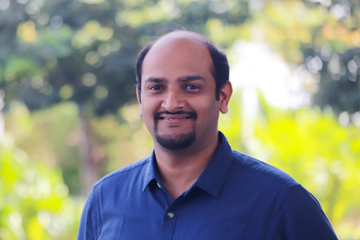
An intriguing paper on “Recent developments and strategies in genome engineering and integrated fermentation approaches for biobutanol production from microalgae” has been published in Fuel by Dr Karthik Rajendran, Department of Environmental Science, SRM University-AP, Andhra Pradesh. Fossil fuels such as petrol, coal, and natural gas deplete natural resources and increase emissions leading to global warming and climate change. As the transportation sector is heavily dependent on liquid fuels and only a few alternatives are available including ethanol, there is an urgent need for higher energy-dense liquid fuel, which is researched across the world, and butanol is considered as an alternative.
There is a constant conflict between food and fuel where the debate lies on whether to swap agricultural lands to produce fuel. An alternative to tackle this problem is identified to be microalgae which is the third-generation feedstock. This feedstock does not conflict with the production of food, as agricultural land is not necessary for its creation. In his work, Dr. Karthik explored different mechanisms for producing butanol from microalgae.
 Dr Karthik has been curious on developing industrially feasible solutions for bioenergy, waste management, and sustainability as these industrial solutions are least researched and transferred. This has motivated him to work on economically viable solutions for industries. Dr Karthik explains, “In this work, the mechanisms and fermentation strategies of butanol production from microalgae is explored. Advancing with the research, our team will work on identification of the bottlenecks pertaining to such pathways along with assessing the profitability of producing butanol from microalgae.”
Dr Karthik has been curious on developing industrially feasible solutions for bioenergy, waste management, and sustainability as these industrial solutions are least researched and transferred. This has motivated him to work on economically viable solutions for industries. Dr Karthik explains, “In this work, the mechanisms and fermentation strategies of butanol production from microalgae is explored. Advancing with the research, our team will work on identification of the bottlenecks pertaining to such pathways along with assessing the profitability of producing butanol from microalgae.”Link to the research paper: Please Click Here
Continue reading → - Dr Nimai Mishra’s research on popular fluorescent nanoparticles get published in reputed journal September 23, 2020
Amine-free air- stable perovskite nanocrystals for future optoelectronic devices
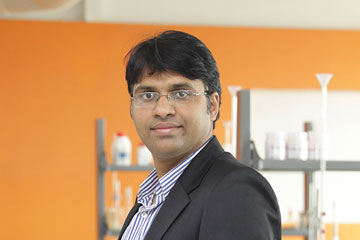
Dr. Nimai Mishra, Department of Chemistry, SRM University-AP, Andhra Pradesh, along with his research group comprising of his Ph.D. students – Mr. Syed Akhil and Ms. V.G.Vasavi Dutt, have published “Completely Amine-free Open Atmospheric Synthesis of High Quality Cesium Lead Bromide (CsPbBr3) Perovskite Nanocrystals” in the journal “Chemistry-A European Journal” (Wiley-VCH, Impact factor 4.86).
Cesium Lead Halide Perovskite Nanocrystals (NCs) CsPbX3 (X=Cl, Br, and I) have gained popularity in the last few years due to their high Photoluminescence Quantum Yield (PLQY) owning for Light Emitting Diodes (LEDs), and other significant applications in Photovoltaic and Optoelectronics. Dr Mishra says, “In this research work, we demonstrated a facile and efficient amine- free synthesis of Cesium Lead Bromide Perovskite Nanocrystals using Hydrobromic acid as halide source and n-trioctylphosphine (TOP) as ligand in open atmospheric conditions.” He further explains, “The hydrobromic acid (HBr) served as labile source of bromide ion, thus, this three-precursor (separate precursors for Cs-Pb-Br) approach gives more control over conventional single-source precursor for Pb and Br (PbBr2). The use of HBr paved the way to eliminate oleylamine, as a result, we can completely exclude the formation of labile oleylammonium ion halide.”
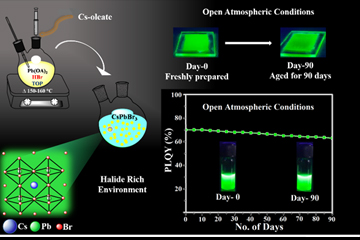 Dr Mishra and his research group extensively studied the various Cs-Pb-Br molar ratio and found an optimum condition that was able to stabilize with high PLQY CsPbBr3 NCs. These completely amine-free CsPbBr3 perovskite NCs synthesized using bromine-rich condition, exhibit good stability and durability for more than three months in the form of colloidal solutions and films respectively. Furthermore, they demonstrated stable tunable emission across a wide spectral range, via anion exchange process. More significantly, their work presents an open atmospheric stable CsPbBr3 NCs films demonstrating high photoluminescence (PL), which can be further used for optoelectronic device applications.
Dr Mishra and his research group extensively studied the various Cs-Pb-Br molar ratio and found an optimum condition that was able to stabilize with high PLQY CsPbBr3 NCs. These completely amine-free CsPbBr3 perovskite NCs synthesized using bromine-rich condition, exhibit good stability and durability for more than three months in the form of colloidal solutions and films respectively. Furthermore, they demonstrated stable tunable emission across a wide spectral range, via anion exchange process. More significantly, their work presents an open atmospheric stable CsPbBr3 NCs films demonstrating high photoluminescence (PL), which can be further used for optoelectronic device applications.These high-quality nanocrystals have the potential to be used as active material in LED devices. Advancing his research, Dr Mishra and his team are planning to make a prototype LED device using their nanocrystals.
Link to the research paper: Please Click Here
Continue reading → - Novel cost-effective framework for autonomous vehicle infrastructure September 15, 2020
Simulating time-variant channel impulse response for mmWave I2I channels using Doppler spread information
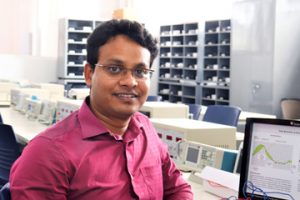 Dr Anirban Ghosh
Dr Anirban GhoshDr Anirban Ghosh, Assistant Professor, Electronics and Communication Engineering, has recently published a paper titled “Time Variance of 60 GHz VI2I channel”. The paper is published in the renowned journal Elsevier-Vehicular Communication with an Impact Factor of 4.7. This paper explores the implementation challenges in unlicensed 60 GHz frequency band for autonomous vehicle infrastructure. This work has been implemented in collaboration with his colleagues from NIT Durgapur and collaborators from Brno University under the aegis of Prof. Ales Prokes. This work is also funded by the Science Foundation grant (Czech) and National Sustainability Program grant (Czech) and DST-Core Research Grant(India).
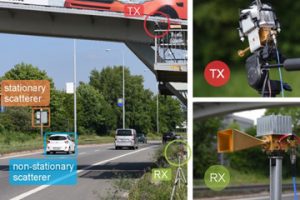 Fig 1: Field test setup at the measurement site
Fig 1: Field test setup at the measurement siteSmart cities are cities on the move; having a mission of delivering people and goods with zero congestion, zero fatality and zero energy wastage. For realising this mission, a smart city needs an intelligent transport system (ITS). As far as the communication aspect of ITS is concerned, historically, the urban ITS planners were more concerned about vehicle-to-vehicle (V2V) and vehicle-to-infrastructure (V2I) modes of communication. This is because the V2V and V2I channels are essentially wireless, and establishing reliable low-latency links over these channels is challenging. Infrastructure-to-infrastructure (I2I) communication is also an integral part of the ITS initiative, and due to their rapid, dynamic and non-invasive nature of the installation, wireless I2I links are preferred over wired links in several smart-road based ITS applications. In order to implement wireless I2I communication, transceivers may be fitted with different kinds of roadside units (RSUs), e.g., short height traffic signposts, overhead gantries, and cantilever sign supports. The traditional role of these RSUs is to support the basic ITS goals, i.e. driver assistance or traffic management. As the vehicular networks scale-up, ITS computations are being shifted to the edge, and the RSUs are going to play more prominent roles in the form of edge computing devices. For example, RSUs can form the cloudlet layer of a vehicular fog computing (VFC) architecture for the internet of vehicles (IoV).
Vehicular wireless I2I channels realise fixed-to-fixed (F2F) radio communication between two RSUs. For any F2F radio channel with stationary transmitter (TX) and receiver (RX), the time-variance is caused by the mobility of the scatterers. These mobile scatterers, say passersby for an indoor scenario, or passing vehicles for an outdoor scenario, cause changes in path lengths in a fading multipath channel. When viewed in frequency-domain, this yields a change in carrier frequency termed as Doppler shift which is proportional to the velocity of the scatterer, and the spectral broadening caused by the time rate of change of the channel is measured with the Doppler spread. Information about Doppler spread is critical for V2V applications such as platooning. In the context of V2I applications, accurate estimation of the Doppler spread is required for designing adaptive transceivers, smart antennas and for determining cellular handoffs. Doppler spread information can also be used for I2I applications like speed estimation. The radar-based solution has a lower latency compared to a camera-based solution, owing to the video acquisition and processing time of the later. As the Doppler shift is a linear function of the carrier frequency, it is of greater concern while moving up in the frequency ladder to the millimetre wave (mmWave) regime. The Doppler spread in the unlicensed 60 GHz mmWave band would be 10-30 times that in the current sub-6 GHz band, with a range spanning from 10 Hz to 20 kHz depending on the velocity of the scatterers. Moreover, compared to V2V links, the effect of moving scatterers is much more pronounced in F2F links; walking pedestrians with a velocity order of ∼ 1 m/s or even the tree leaves fluttering in the wind are important for F2F channel modelling. For highways, the moving vehicles have a velocity an order higher (> 10 m/s) and contribute significantly to the time-variance of the roadside wireless I2I links.
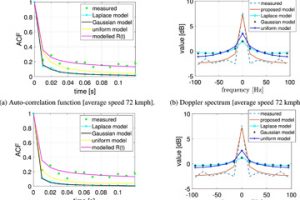 Fig 2: Comparison of the measured and
Fig 2: Comparison of the measured and
proposed models of ACF and Doppler
Spectrum with existing analytical modelsIn this paper, Dr Ghosh studied the time-variance of a roadside infrastructure to infrastructure (I2I) channel operating at 60 GHz millimetre wave (mmWave) band, where the time-variance is caused by moving vehicles acting as scatterers. At first, measurement data is obtained by placing the transmitter (TX) and the receiver (RX) at different heights to emulate a link between two nonidentical roadside units (RSUs), and time-domain channel sounding is performed by sending complementary Golay sequences from the TX to the RX. A linear piecewise interpolation of the corresponding temporal auto-correlation function (ACF) is used to find the Doppler spread of the I2I channel, where their interpolation method compensates for a slower sampling rate. Next, a framework is presented for the time-variant channel impulse response (CIR) simulation, which focuses on moving scatterers only and validates the linear piecewise ACF model. The framework is useful for time-variant vehicular I2I channel simulation and in speed estimation related vehicular applications. Finally, a double-slope curve-fitted analytical model for ACF is proposed as a generalisation to the linear piecewise model. The proposed model and its Doppler spectrum are found to be in agreement with the analytical results for fixed-to-fixed (F2F) channels with moving scatterers and matches perfectly with the measured data. “Our research has explained a framework for simulating time-variant channel impulse response (CIR) for mmWave I2I channels with moving scatterers using Doppler spread information – which provides means to study the various characteristics of an I2I channel even without carrying out any expensive channel sounding campaign”, said Dr Ghosh.
Dr Ghosh and his collaborators are currently exploring further challenges in communication between vehicles (V2V) in the same frequency range (60 GHz).
To know more about the paper, please visit- https://www.sciencedirect.com/science/article/abs/pii/S2214209620300590?dgcid=coauthor
Continue reading → - SRMAP’s collaborative research on Inertial Electrostatic Confinement with BARC. September 15, 2020
Dr Somesh Tiwari has received Mentoring of Engineering Teachers by INAE (Indian National Academy of Engineering) Fellowship -2020.
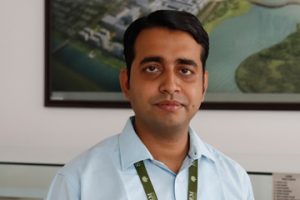
Dr Somesh Vinayak Tewari, Assistant Professor, Department of Electronics and Electrical Engineering, brings another honour for SRM University-AP. He has been selected for Mentoring of Engineering Teachers by INAE (Indian National Academy of Engineering) Fellowship -2020. His mentor during the programme will be Dr Archana Sharma, FIE, FNAE, Outstanding Scientist, Bhabha Atomic Research Centre.
The INAE (Indian National Academy of Engineering) provides funding to an Engineering Teacher for carrying out research in the selected/proposed area to be mentored by an INAE fellow. The scheme attempts to increase the knowledge base and is instrumental in building long term collaborations. Such mentoring program helps in bridging the collaboration between an academic area and a research and development organization which is extremely necessary to sow the seeds of research in young and energetic brains so that they are able to translate their research ideas for further growth. This interaction of ideas leads to a win-win situation for both the University and the research organization. The prestigious and highly competitive fellowship receives thousands of applications nationwide though only fifteen of them finally are selected for the fellowship this year by INAE. Dr Somesh is one of fifteen outstanding researchers.
Dr Tiwari will be working on the proposed research topic- “Studies on Inertial Electrostatic Confinement Concept in Deuterium gas environment”. Inertial Electrostatic Confinement (IEC) is an alternative concept to Magnetic and Inertial fusion. IEC fusion device is an extremely compact and simple device, running by high voltage as discharge on Deuterium -Deuterium/Deuterium-Tritium/Deuterium -3He fuel gases. Studies related to IEC find application in the areas of dosimeter calibration, isotope production, radiography, and has medical applications. Such a research is multifaceted and helps an engineering teacher to enhance his skills in experimental areas of high voltage, plasma physics, vacuum techniques, radiation detection and measurement and in numerical methods and simulation leading to a comprehensive analysis of a given problem. During the two months of the fellowship, Dr Archana Sharma will be mentoring the project. It is an excellent opportunity for our faculty to work with such a renowned scientist in such close proximity. The collaboration will be beneficial for both institutions.
Continue reading → - CSE student presented paper on Data Hiding August 17, 2020
K. Sree Rama Murthy, Second Year B. Tech-CSE student presented a paper at a conference in IIT-Kharagpur
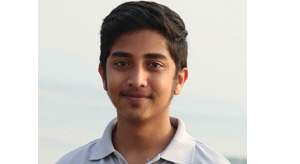 K. Sree Rama MurthySRM University-AP always inspires the students in their pursuits, be it a job of their choice or a career in research and higher studies. K. Sree Rama Murthy, a 2nd-year student of B.Tech in Computer Science and Engineering, has recently presented a research paper on “A Block-wise Histogram Shifting based Reversible Data Hiding Scheme with Overflow Handling” in the Eleventh International Conference on Computing, Communication and Networking Technologies (11th ICCCNT), held at IIT Kharagpur, India in association with IEEE Kharagpur Section, during July 1 – 3, 2020.
K. Sree Rama MurthySRM University-AP always inspires the students in their pursuits, be it a job of their choice or a career in research and higher studies. K. Sree Rama Murthy, a 2nd-year student of B.Tech in Computer Science and Engineering, has recently presented a research paper on “A Block-wise Histogram Shifting based Reversible Data Hiding Scheme with Overflow Handling” in the Eleventh International Conference on Computing, Communication and Networking Technologies (11th ICCCNT), held at IIT Kharagpur, India in association with IEEE Kharagpur Section, during July 1 – 3, 2020.Data hiding is a process of embedding a secret message into a cover medium for secure message transmission. The reversible data hiding techniques are recently explored in the domain of data hiding in which the cover image can be recovered while extracting the hidden secret message. The overview of a reversible data hiding scheme is shown in Figure. 1.
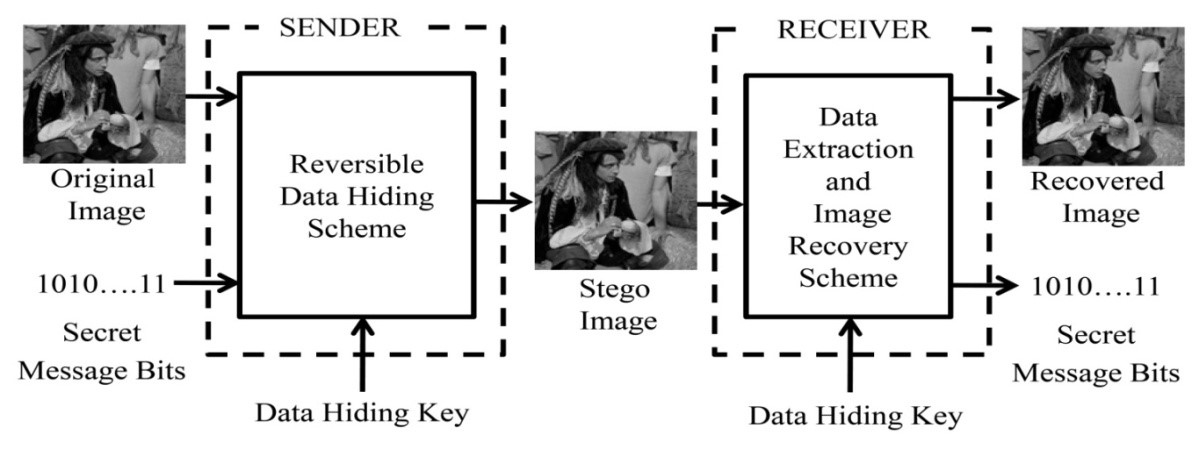 Figure 1. Overview of reversible data hiding
Figure 1. Overview of reversible data hidingIn this research paper, Sree Rama Murthy introduced a new reversible data hiding algorithm based on the histogram of the blocks of the cover images with an efficient overflow management technique to achieve a better embedding rate without compromising the visual quality of the stego image.
Design and development of reversible data hiding schemes are widely studied topic due to its wide scope in cloud computing and medical image transmission. This paper introduces a new reversible data hiding algorithm based on the histogram of the blocks of the cover images with an efficient overflow management technique. In the new scheme, the peak intensity value from each block is used for data hiding, and to make sure the correct recovery of the original image, the grayscale value used for data hiding from each block is embedded in the same block itself by replacing the least significant bits of eight selected pixels. The lossless recovery is ensured by embedding those least significant bits in the same block itself along with the secret message. Detailed theoretical analysis and experimental study of the scheme are carried out and discussed in this paper. The images from the standard image dataset of the University of Southern California (USC-SIPI) are used in their study.
“To be able to publish a research paper at such an early stage in a reputed conference like ICCCNT-2020 is an achievement that has acted as a cornerstone for my research aspirations. I feel highly encouraged, motivated and inspired to contribute more in the fields of research. I express my sincere gratitude to my professors, especially to Dr Manikandan V. M for providing me with the opportunity to collaborate. He put his trust on me, encouraged to do research with him and guided me with his knowledge and experience throughout the journey. I feel this is only the beginning for me, and I will try my best to accomplish more and retain more knowledge,” said Sree Rama Murthy.
Sree Rama Murthy plans to acquire a master’s degree in computer science and aspires to be a researcher who can make significant contributions in the domain of Computer Science and Engineering.
Continue reading → - 2D nanomaterials for various sustainable applications August 13, 2020
American Chemical Society publishes Dr Lakhveer Singh’s book on Advanced Applications of 2D Nanomaterials
 Dr Lakhveer Singh, Assistant Professor, Department of Environmental Science, SRM University-AP, Andhra Pradesh has edited a book on “Adapting 2D Nanomaterials for Advanced Applications” which is published in the globally renowned publishing house American Chemical Society. The book emphasizes on his collaborative work with Dr Durga Mahapatra, TERI Deakin Nanobiotechnology Center (TDNBC), TERI, India on 2D nanomaterials for various sustainable applications such as energy production and storage, biosensor, water treatment etc.
Dr Lakhveer Singh, Assistant Professor, Department of Environmental Science, SRM University-AP, Andhra Pradesh has edited a book on “Adapting 2D Nanomaterials for Advanced Applications” which is published in the globally renowned publishing house American Chemical Society. The book emphasizes on his collaborative work with Dr Durga Mahapatra, TERI Deakin Nanobiotechnology Center (TDNBC), TERI, India on 2D nanomaterials for various sustainable applications such as energy production and storage, biosensor, water treatment etc.2D nanomaterials, or graphene equivalents, possess an exceptional array of characteristics due to their unique structure, configuration, and properties. Such materials have gained attention for countless applications due to their progression into wide varieties of crystallographic structures via abundant elemental compositions. These characteristics distinctively impart qualities to their unique chemical reaction capabilities and adjustable structural properties and therefore enable applications in energy transitions, storage, and conservation.
In his research, Dr Lakhveer has developed a variety of nanomaterials and catalysts having several applications. He mentions, “We have developed Mesoporous MnCo2O4 nanorods for electricity production, NiO, and CoO nanoparticles for biohydrogen production and Cu-ZnO nano heterojunction for degradation of chlorpyrifos pesticide.” Recently, Dr Lakhveer has developed reduced graphene oxide and silver nanoparticles on a melamine sponge skeleton by a simple coating method in collaboration with Oregon State University, USA, and Xiamen University, China. The modified sponge retained the high porosity of the sponge substrate and exhibited photothermal properties. This material provides a new idea for the recovery of heavy crude oil and provides new applications for photothermal-conversion materials.
Dr Lakhveer is currently vested in developing efficient and economical nanocatalysts that possess commercial applications in the energy and water sectors. In the next few months, he will be publishing two more books in the American Chemical Society (ACS) and Elsevier. These books will focus on novel electrodes, nano catalytic materials, and subnanometric-scale catalysts having applicability at the Nanoscale.
Continue reading → - Artificial Intelligence: The Future of Healthcare in India July 27, 2020
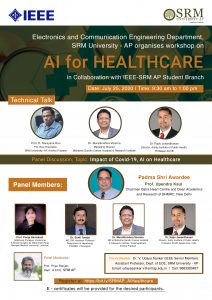 Department of Electronics and Communication Engineering, SRM University-AP, Andhra Pradesh organised an insightful workshop on “Artificial Intelligence (AI) for Healthcare” in collaboration with IEEE-SRM AP Student Branch on 25th July. Prof. D. Narayana Rao, Pro-Vice-Chancellor, inaugurated the session. The workshop was divided into two sessions.
Department of Electronics and Communication Engineering, SRM University-AP, Andhra Pradesh organised an insightful workshop on “Artificial Intelligence (AI) for Healthcare” in collaboration with IEEE-SRM AP Student Branch on 25th July. Prof. D. Narayana Rao, Pro-Vice-Chancellor, inaugurated the session. The workshop was divided into two sessions.
1. Technical presentation
2. Panel discussionDr Muralikrishna Voonna, Managing Director, Mahatma Gandhi Cancer Hospital & Research Institute, and Dr Rajiv Janardhanan, Director, Amity Institute of Public Health, Professor ACVB participated in the technical presentation. Dr Voona delivered a lecture on “Impact of AI in Clinical Healthcare” whereas Dr Rajiv Janardhanan spoke on “Sustainable Healthcare: AI-enabled platforms for Affordable and Accessible Healthcare Solutions”.
Eminent panellists such as Padma Shree Awardee Prof. Upendra Kaul, Dr Pooja Ramakant, Dr Sunil Taneja, Dr Muralikrishna Voonna, and Dr Rajiv Janardhanan interacted on “Impact of Covid-19, AI on Healthcare” during the second half of the session. Prof. Priya Ranjan, Department of ECE, SRM-AP, acted as the moderator of the session. Dr Udaya Shankar V, Assistant Professor, Department of ECE, was the coordinator of the workshop.
In his opening remarks, Prof. D. Narayana Rao asserted that healthcare in India faces significant challenges on quality, accessibility and affordability for a large section of the Indian population. Many healthcare experts are aware that in India, 70% of healthcare infrastructures are in the cities which caters only to 30% of India’s Population. “The shortage of doctors, lack of infrastructures, different mindset about the urban and rural population of the country and low government spending on the healthcare are very much motivating India towards innovative and sustainable and affordable technology to improve the quality of life,” said Prof Rao. He further mentioned that AI in Indian healthcare is expanding at a significant rate of 40% approximately. The AI-enabled health services such as automated analysis of medical tests, predictive healthcare diagnosis with the help of monitoring equipment and wearable sensor-based medical devices are expected to revolutionise medical treatment process in the country. AI is being extensively used in six healthcare segments such as hospital administration, pharmaceuticals, diagnostics, medical equipment and supplies, medical insurance and telemedicine. “Moreover, hospitals can implement patient-centric plans with the help of AI to avoid unnecessary hospital procedures and making healthcare services faster in India. The Government of India also shows its keen inclination as in the past week, the Hon’ble prime minister Sri Narendra Modi had a discussion with the CEO of IBM regarding the development of AI-enabled medical instruments for healthcare in the country. Needless to say, there are a plethora of opportunities for new engineers and doctors,” opined Prof Rao.
In his talk, Dr Murali Krishna Voonna confirmed that Artificial intelligence has a huge potential to become a transformational force in healthcare. It allows humans to gain unprecedented insights into diagnosis, care process, treatment variability and patient outcomes. Nowadays, machine learning uses statistical technics to give computing systems to learn with incoming data to identify patterns and make decisions which will help the doctors to assess risks, make a correct diagnosis, and offer more effective treatments. Robot-assisted surgery is now being widely popular for the precision and accuracy in performing a complicated surgery. AI is world’s one of the highest growth industries projected to reach $150 billion by 2026. It can compensate for physician biases and be used in personalised therapy by studying genome. Dr Voonna further informed that there is a huge scope for development in the segments such as brain-computer interface, next-generation radiology tools, creation of precise analytics for pathology images, expanding access to treat underserved regions, clinical decision support etc. to name a few. “Several reputed companies have invested in India to improve the AI in healthcare. NITI Aayog is working with Google to develop artificial intelligence ecosystems in India both in training and research. They have started a National Research Strategy for Artificial Intelligence recently. National Digital Health Authority has been formed as a regulatory body which is going to make the regulation in the Artificial Intelligence in start-ups and business and commercialisation of the products. Still, AI in healthcare is a decision support tool but not a decision-making tool,” explained Dr Voonna.
In the opinion of Dr Rajiv Janardhanan, the healthcare disparity continued because the investments of the government in the years after independence is less than 2 %. COVID-19 has turned out to be a blessing for health care as it made people especially policy-makers to realise that the healthcare infrastructure needs to be improved drastically. The AI-enabled intelligent support system is required because of budget constraints, rising costs of advanced medical treatments, increased complexity and cost of delivering healthcare, as well as increased expectations and demand for quality patient-centred healthcare. India comprises of a healthcare ecosystem where 80% of the healthcare is expensive, and 70% of the population is living in rural areas with marginalised and inaccessible healthcare. This makes the rationale to develop tools which are community empowering. “Knowledge dissemination of health literacy is required necessarily to increase the productive hours of the nation. When we empower the stakeholders with health literacy it directly aligns with the health promotion efforts, provides a rationale with community-empowering policy decision making, where the weakest stakeholder in the healthcare system can be an active participant,” asserted Dr Janardhanan. AI-enabled tagging of data can convert precision medicine to a community-centric new system which is called precision public health. This conversion has to be technology-enabled with support from the engineering fraternity to make it affordable and accessible.
During the second half of the session, the panel discussed the impact of COVID-19 on health immunity system. Padma Shree Awardee Prof Kaul explained in detail how COVID-19 disease affects the human body and the process of vaccination. He gave a detailed overview of how vaccines are prepared and the process of a clinical trial. He further shared the updated information on the COVID-19 vaccine with particular focus on India’s progress in making the vaccine. Dr Taneja and Dr Ramakanth expressed their views on COVID situation based on their daily experience at the hospitals. The panel agreed that the adoption of artificial intelligence (AI) in the healthcare system enables healthcare services, delivered at a lower cost with increased efficiency and emphasis on the diagnostics. AI should be encouraged to be used in machines to predict, comprehend, learn and act. It has the ability to play the role of game-changer in the areas of wellness, early detection, diagnosis, decision making, treatment, end of life, research and training. However, some concerns related to the safety, data quality, accountability, transparency, legal aspects etc. still persists.
The enthralling session ended with the vote of thanks. The insightful event certainly helped the participants to understand the approach in which AI is reinventing and improving modern healthcare through technologies that can estimate, comprehend, explore, and perform effectively.
Continue reading → - SRM AP organized webinar on “EFFECTIVE WAYS OF WRITING RESEARCH ARTICLE” July 26, 2020
Prof Shobhana Narasimhan on “How to publish without perishing”
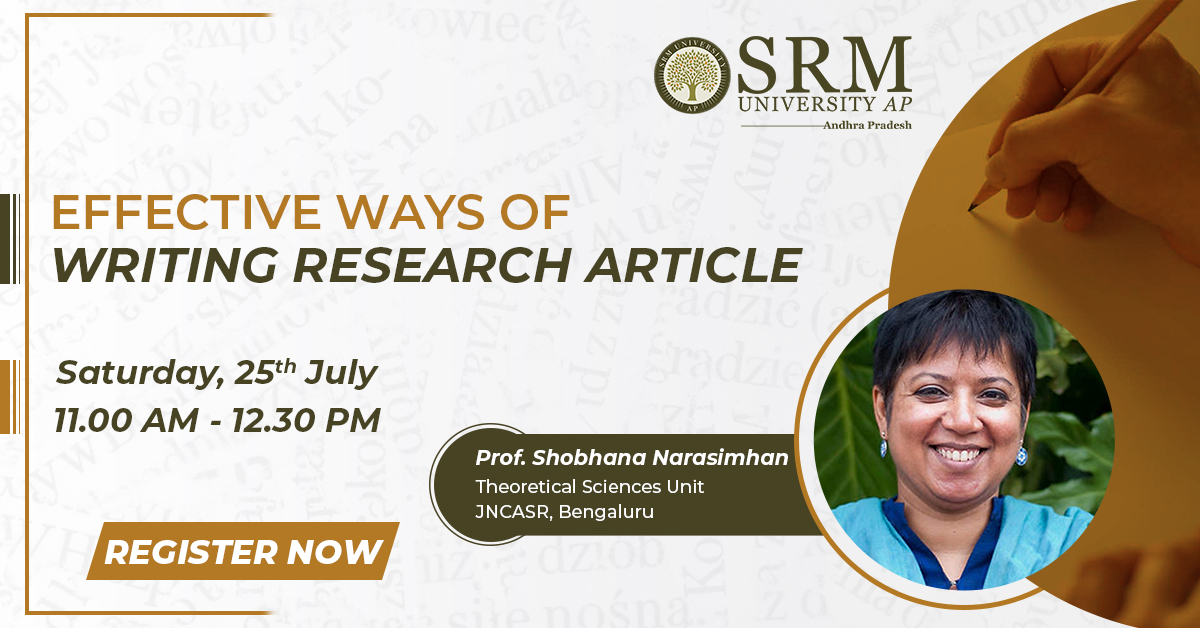 SRM University-AP, Andhra Pradesh organized a webinar titled “EFFECTIVE WAYS OF WRITING RESEARCH ARTICLE” to enhance the opportunities endowed to young scholars that would enable them to demonstrate their expertise and improve their critical analyzing skills. Prof D. Narayana Rao, Pro-Vice Chancellor, welcomed the guest speaker Prof Shobhana Narasimhan, Theoretical Sciences Unit, Jawaharlal Nehru Centre for Advanced Scientific Research (JNCASR), Bengaluru, and participants of the webinar through his opening remarks. Prof D. Narayana Rao explained the importance of higher education and research as they are critical contributors to sustainable livelihood and the economic development of the nation. He said, “Research serves as a hub to harbour innovative ideas that enlighten and propel the country forward socially, culturally, scientifically, technologically, and economically. In view of the requirements of the 21st century, the aim of quality university education is to develop good well rounded and creative individuals. Higher education and research must enable knowledge creation and innovation, thereby contributing to the economy.”
SRM University-AP, Andhra Pradesh organized a webinar titled “EFFECTIVE WAYS OF WRITING RESEARCH ARTICLE” to enhance the opportunities endowed to young scholars that would enable them to demonstrate their expertise and improve their critical analyzing skills. Prof D. Narayana Rao, Pro-Vice Chancellor, welcomed the guest speaker Prof Shobhana Narasimhan, Theoretical Sciences Unit, Jawaharlal Nehru Centre for Advanced Scientific Research (JNCASR), Bengaluru, and participants of the webinar through his opening remarks. Prof D. Narayana Rao explained the importance of higher education and research as they are critical contributors to sustainable livelihood and the economic development of the nation. He said, “Research serves as a hub to harbour innovative ideas that enlighten and propel the country forward socially, culturally, scientifically, technologically, and economically. In view of the requirements of the 21st century, the aim of quality university education is to develop good well rounded and creative individuals. Higher education and research must enable knowledge creation and innovation, thereby contributing to the economy.”Prof D. Narayana Rao believes that institutes must build expertise that will impact the society for the next 3 decades and beyond. Prof D. Narayana Rao explained, “Simply tailoring people into jobs that exist today but are likely to change or disappear in the coming years, is suboptimal and even counterproductive. The universities and educational institutions need to instill the thought process and inquisitiveness among students by going beyond the classroom and expanding the frontiers of knowledge.” He urged that there is a dire need to emphasize the pride and prestige associated with research to make the students feel honoured and excited for undertaking scientific pursuits. Prof D. Narayana Rao informed, “At SRM AP, we encourage undergraduate and graduate students to get involved in research. This country has the legacy of producing young scientists who have published papers in highly reputed journals. Realizing that, we do encourage undergraduate students to get involved with research and publish papers in good journals. This also familiarizes our students to a research-intensive environment, benefiting them in their future endeavours”. Prof D. Narayana Rao concluded by requesting Prof Shobhana Narasimhan to motivate the students to carry out research and publish good research journals, believing that she will hypnotize the participants and inspire them to succeed.
Prof Shobhana Narasimhan began the presentation, “How to publish without perishing” with the purpose of improving the articles so that they find places in good journals. She initiated her talk by saying that writing papers is an integral part of the scientific research pursuits. Quoting Francois Arago: “To get to know, to discover and to publish in the destiny of the scientist”, and Robert Boyle: “Writing about science should be clear but it can also be made beautiful”, she explained the rules of effective research writing.
Prof Shobhana Narasimhan said that foremost, one needs to identify the reason for their willingness to write a paper. Further, she elaborated on the first rule of effective writing by mentioning that one should choose the journal carefully before writing the paper as the article should be aligned to the requirements and regulations of the particular journal in mind. Also, she suggested that one has to consider the extent of the readership of the journal, difficulty in getting the paper published in the journal, prestige associated with publishing in the journal, payment involved with the publishing, and the time required for the article to be published in the journal. She also said, “Often, invitations come from predatory journals and one should research carefully regarding the same. A publish in a predatory journal becomes a black mark in your career. It is better to go through the struggle of publishing in a respected journal than to go for the easy options”.
Prof Shobhana Narasimhan also speaks of constructing a story while writing the paper. She insisted, “The most important rule is to narrate a story while writing a paper. It is not just about calculations and results.” She explained the 3 steps associated with constructing the story. First, the research scholars require to ‘assemble the materials’. Depending on the requirement, one can use either of the three techniques: ‘mind maps’ which works better when there is one main concept and one can start from the centre, the second is ‘concept maps’ which works better when one has several related concepts and can use a flowchart to structure it from the top, and the third one is ‘timelines’ which works mostly with review articles, where a chronological sequence is used to assemble the materials. Prof Shobhana Narasimhan moved on to discuss the second step – ‘keeping and discarding information’. She used a schematic diagram to explain the usual proceedings of a scientific research. She said, “The path to scientific discovery is a complex tree-like structure. One does not need to describe all the blind alleys encountered during the research, a specific and balanced representation would be the ideal path to traverse.” Further, in the third step, one must ‘arrange the materials in a sequence’ which can be chronological or logical. Prof Shobhana Narasimhan informed, “In a scientific paper, a logical sequence is usually preferred. Play with the facts and results to construct a narrative and structure the argument in a flowchart to improve the efficiency.”
Prof Shobhana Narasimhan explained another rule: ‘clear what your message is’. She said, “The article should not be too clear, but it should be as clear as possible. Possible messages that one can provide in a paper include the most significant result, the second most significant result, new techniques and approach presented in the work or the existing method used in a new area, and whether the work contradicts/confirms the existing expectations.” She concluded by mentioning that the scholars need to tailor the paper to the journal’s audience by considering whether they are likely to be experts or laymen. This would allow the writer to construct the appropriate language for the paper and decide on the extent of information to be shared. She also urged researchers to use simple words when possible, check for grammatical errors, avoid plagiarism, abide by the journal’s style guidelines, and include a cover letter to increase the probability of getting their research articles published in reputed journals.
Continue reading → - Energy-Efficiency Optimization over Full-Duplex IoT Networks Towards Commercial Applications July 25, 2020
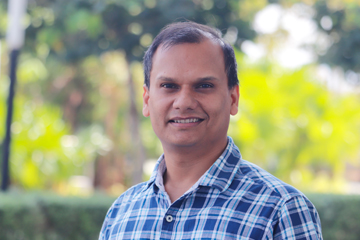 Dr Om Jee Pandey Two research papers of Dr Om Jee Pandey, Assistant Professor, Department of Electronics and Communication Engineering, have been accepted in reputed IEEE Journals. The papers titled “Multiuser Full-Duplex IoT Networks with Wireless-Powered Relaying: Performance Analysis and Energy Efficiency Optimization,” and “Time Synchronized Node Localization Using Optimal H-Node Allocation in a Small World WSN” are going to be published in IEEE Transactions on Green Communications and Networking and IEEE Communications Letters, respectively. The paper “Multiuser Full-Duplex IoT Networks with Wireless-Powered Relaying: Performance Analysis and Energy Efficiency Optimization,” was pursued in collaborations with Prof. Ha H. Nguyen, Department of Electrical and Computer Engineering, University of Saskatchewan, Saskatoon, Canada, and Dr Mahendra K. Shukla, who is associated with Macau University of Science and Technology as a Post Doctoral Fellow.
Dr Om Jee Pandey Two research papers of Dr Om Jee Pandey, Assistant Professor, Department of Electronics and Communication Engineering, have been accepted in reputed IEEE Journals. The papers titled “Multiuser Full-Duplex IoT Networks with Wireless-Powered Relaying: Performance Analysis and Energy Efficiency Optimization,” and “Time Synchronized Node Localization Using Optimal H-Node Allocation in a Small World WSN” are going to be published in IEEE Transactions on Green Communications and Networking and IEEE Communications Letters, respectively. The paper “Multiuser Full-Duplex IoT Networks with Wireless-Powered Relaying: Performance Analysis and Energy Efficiency Optimization,” was pursued in collaborations with Prof. Ha H. Nguyen, Department of Electrical and Computer Engineering, University of Saskatchewan, Saskatoon, Canada, and Dr Mahendra K. Shukla, who is associated with Macau University of Science and Technology as a Post Doctoral Fellow. Block diagram of the full-duplex
Block diagram of the full-duplex
wireless-powered relay based on power splitting There has been a growing interest in improving energy efficiency for next-generation Internet of Things (IoT) networks due to the increasing demand for green communications. Motivated by this demand, energy efficiency maximization has been investigated for several networks. Specifically, without considering simultaneous wireless information and power transfer networks, various works have extensively studied energy efficiency maximization for half-duplex networks and full-duplex networks. Further, by considering simultaneous wireless information and power transfer networks, several works have examined energy efficiency maximization in half-duplex networks. Moreover, energy efficiency for next-generation IoT networks with simultaneous wireless information and power transfer has also been studied by considering half-duplex transceivers. It appears that energy efficiency problems for multiuser full-duplex IoT networks have not been studied in the open literature. Multiuser FD-IoT network with
Multiuser FD-IoT network with
wireless-powered TWR Motivated by the above discussion, in this work we consider a full-duplex IoT network in which a multi-antenna access point and several single antenna IoT devices exchange information bidirectionally with the aid of a wireless-powered single-antenna relay, under generalized Nakagami-m fading channels. In particular, we consider the power splitting protocol at the full-duplex relay terminal, and each communication terminal operates in the full-duplex mode. For such a network, we first formulate the instantaneous end-to-end signal-to-interference-plus-noise ratios (SINRs) by employing maximum-ratio transmission (MRT) beamforming and maximum-ratio combining (MRC) at the access point A, as well as IoD scheduling. Then, based on the obtained SINRs, we evaluate the overall outage probability and ergodic sum-rate of the network. Furthermore, we develop an optimal power allocation to maximize the network’s EE. Integral area for the
Integral area for the
overall outage probability Recently, with many technological advancements in wireless data transmission, IoT is expected to affect all aspects of our daily lives with its ever-growing and emerging applications. Traditional wireless communication networks are usually limited by the operational time of energy-constrained devices, and therefore energy consumption minimization is a crucial factor in IoT networks. Simultaneous wireless information and power transfer have emerged as a sustainable solution to the scenarios where replacing or recharging batteries is very costly, and may even be impossible. The basic idea of simultaneous wireless information and power transfer is that since radio frequency signals can carry information and energy at the same time, the received radio frequency signals can be utilized for energy harvesting to keep the energy-constrained devices operational. Existing studies adopt two different protocols, namely time switching and power switching, to implement simultaneous wireless information and power transfer receiver architecture. With these protocols, either the power or time of the received signal is split so that one part is used for information processing, and the other is used for energy harvesting.The proposed research can play a crucial role in societal development as it can be applied in developing many state-of-the-art applications in the areas related to green healthcare systems, energy-efficient agriculture systems, green transportation, low power home automation, green manufacturing, low power smart utilities, and energy-efficient industries etc.
His other paper “Time Synchronized Node Localization Using Optimal H-Node Allocation in a Small World WSN”, DOI (identifier) 10.1109/LCOMM.2020.3008086, has been done in collaborations with Prof. Rajesh M Hegde, Department of Electrical Engineering, IIT Kanpur and Dr Mahendra K. Shukla, Post Doctoral Fellow at Macau University of Science and Technology. To know more about Dr Pandey’s work in the domain of Small-World Wireless Sensor Network, visit- https://srmap.edu.in/news/dr-om-jee-pandey-small-world-wireless-sensor-network-help-making-smart-applications-industries/.
Dr Pandey is now not only working for the commercial applications of his current research but also has devoted himself to his future projects, that include-
Continue reading →
Full-Duplex Network Development for Green Healthcare Systems.
Energy-Efficient Cyber-Physical Systems and Internet of Things.
Development of Energy-Efficient Agriculture Systems.
Green and Intelligent Transportation over Full-Duplex Context-Aware Pervasive Systems. - SRM AP faculty receives the prestigious grant by DBT/Wellcome Trust India Alliance July 22, 2020
Investigating giant bacterial viruses to explore the origin of cellular complexity
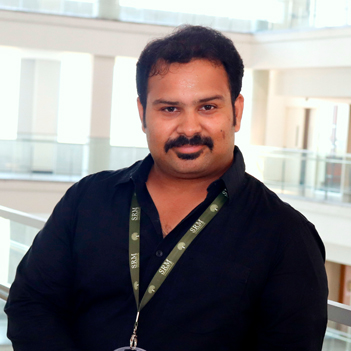 Dr. Sutharsan Govindarajan, Assistant Professor, Department of Biological Sciences, SRM University-AP has been awarded the prestigious ‘Early Career Fellowship’ grant by DBT/Wellcome Trust India Alliance, funded by the Department of Biotechnology (DBT) and the Wellcome Trust, United Kingdom. The fellowship supports outstanding young scientists to pursue high-quality research in the field of biomedical science and establish themselves as independent researchers in India. Dr. Sutharsan sought a total research grant of 1.1 crore for a period of 5 years as a DBT/Wellcome Trust India Alliance Early career fellow. The India Alliance grants are highly competitive and is based on the profile of the applicant and the novelty and the importance of the proposed research. Nationwide only less than 10 Early Career grants are awarded every year. Dr Sutharsan is a highly accomplished scientist, having published research articles in highly reputed journals, including the most prestigious Nature and Nature Microbiology. Through this fellowship, Dr. Sutharsan will establish an independent research laboratory at SRM University – AP with the support of Prof. Jayaseelan, Head, Department of Biological Sciences, and the fellowship supervisor of the project.
Dr. Sutharsan Govindarajan, Assistant Professor, Department of Biological Sciences, SRM University-AP has been awarded the prestigious ‘Early Career Fellowship’ grant by DBT/Wellcome Trust India Alliance, funded by the Department of Biotechnology (DBT) and the Wellcome Trust, United Kingdom. The fellowship supports outstanding young scientists to pursue high-quality research in the field of biomedical science and establish themselves as independent researchers in India. Dr. Sutharsan sought a total research grant of 1.1 crore for a period of 5 years as a DBT/Wellcome Trust India Alliance Early career fellow. The India Alliance grants are highly competitive and is based on the profile of the applicant and the novelty and the importance of the proposed research. Nationwide only less than 10 Early Career grants are awarded every year. Dr Sutharsan is a highly accomplished scientist, having published research articles in highly reputed journals, including the most prestigious Nature and Nature Microbiology. Through this fellowship, Dr. Sutharsan will establish an independent research laboratory at SRM University – AP with the support of Prof. Jayaseelan, Head, Department of Biological Sciences, and the fellowship supervisor of the project.In this project, Dr. Sutharsan plans to venture and explore the biology of a novel class of bacteriophages called Jumbo-phages. “Bacteriophages, which are the most abundant biological entities on the planet, are viruses that infect bacteria but do not harm humans. Jumbo-phages, as the name suggests, are giant viruses with large genome. A sneak peek into their lifestyle during my postdoctoral research led me, to realize that these phages build fascinating complex structures inside the bacteria they infect. Such complex structures are well known to be formed in eukaryotic cells like human cells but was not thought to be made by bacteriophages, which have evolved billions of years before eukaryotes. Thus, studying how such cellular structures are formed by jumbo-phages provides a unique opportunity to investigate the origin of complex life” informs Dr. Sutharsan. He also explains that the proposed research has several biotechnological applications such as phage therapy and synthetic biology.
Dr. Sutharsan further shares, “This is one the best fellowships, a young scientist can obtain in India. It is an honour, prestige and a recognition for the scientist as well as to the University. In the next 5 years, I anticipate major fundamental discoveries in the field of bacteriophage biology and evolution”.
Continue reading →

